
hotline:
17715390137
Tel/Wechat:
18101240246 (Technology)
0512-68565571
Email:mxenes@163.com (Sales Engineer)bkxc.bonnie@gmail.com
Scan the code to follow or search the official account on WeChat:
2D Materials Fronrier After paying attention,
click on the lower right corner to contact us,
Enter enterprise WeChat.
Professional Services Online


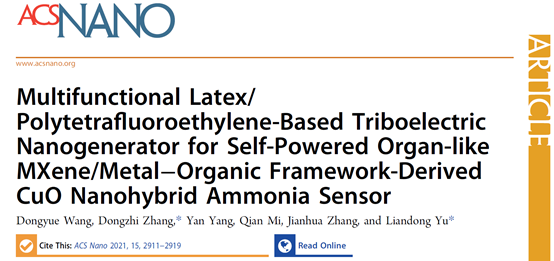

Ammonia (NH3) is an important industrial chemical that is widely used in the industrial production of fertilizers, plastics and synthetic fibers. However, NH3 is also a harmful gas and environmental pollutant. The environmental pollution and health problems caused by it have received widespread attention. It not only threatens the stability of the water ecosystem, but also promotes the formation of suspended particles in the atmosphere. Even low concentrations of NH3 can harm human health and cause a series of diseases such as vomiting, headache and pulmonary edema. The U.S. Occupational Safety and Health Administration sets the allowable limit for long-term exposure to NH3 in indoor environments to 25ppm. At the same time, the metabolic activity of the human body can produce NH3 gas. By detecting the content of NH3 in the exhaled air of the human body, it can also effectively diagnose kidney diseases and other diseases. Therefore, the development of a highly sensitive and stable NH3 sensor is of great significance to environmental protection and human health. Direct measurement of resistance requires an external power supply, which greatly increases energy loss and maintenance costs. Therefore, there is an urgent need for a low-cost self-powered technology to provide energy for the gas sensor.

Recently, Professor Yu Liandong and Professor Zhang Dongzhi of China University of Petroleum (East China) published an article titled: Multifunctional Latex/Polytetrafluoroethylene-Based Triboelectric Nanogenerator for Self-Powered Organ-like MXene/Metal− in the internationally renowned academic journal ACS Nano. Organic Framework-Derived CuO Nanohybrid Ammonia Sensors research paper, reported a self-powered NH3 sensor prepared from accordion-like Ti3C2TxMXene and metal organic framework-derived CuO. The sensor is based on polytetrafluoroethylene (PTFE) and rubber contact- Separation type triboelectric nanogenerator (TENG) drive. The open circuit voltage of the prepared TENG can reach 810 V, and the short circuit current can reach 34 μA. TENG can support a maximum peak power density of 10.84 W·m-2 and can light up at least 480 LEDs. A flexible TENG based on a single-electrode working mode is designed on a PET flexible substrate for human motion monitoring. The self-powered ammonia sensor driven by the triboelectric nanogenerator has a good response (about 24.8) at room temperature. The Ti3C2TxMXene/CuO sensors excellent gas sensitivity to ammonia can be explained by the gas adsorption model and the synergistic effect of the two components.

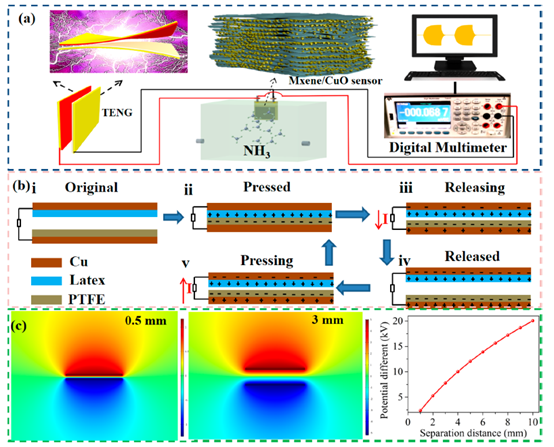
Figure 1. Schematic diagram of self-powered ammonia sensor driven by TENG and the working mechanism of TENG.

Figure 2. TENG performance graph.
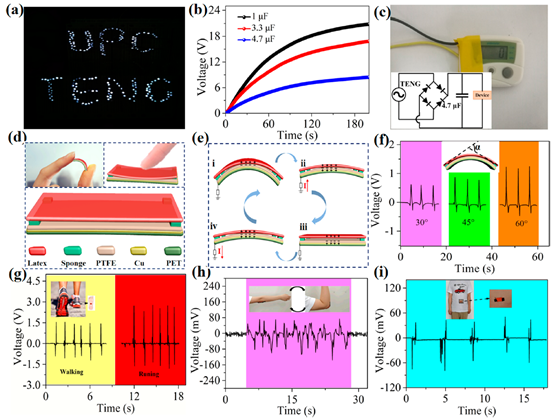
Figure 3. TENG flexible performance characterization and human motion detection.
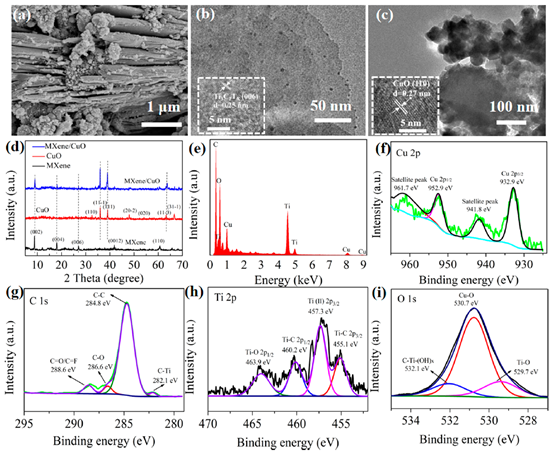
Figure 4. Physical characterization of MXene/CuO composites.
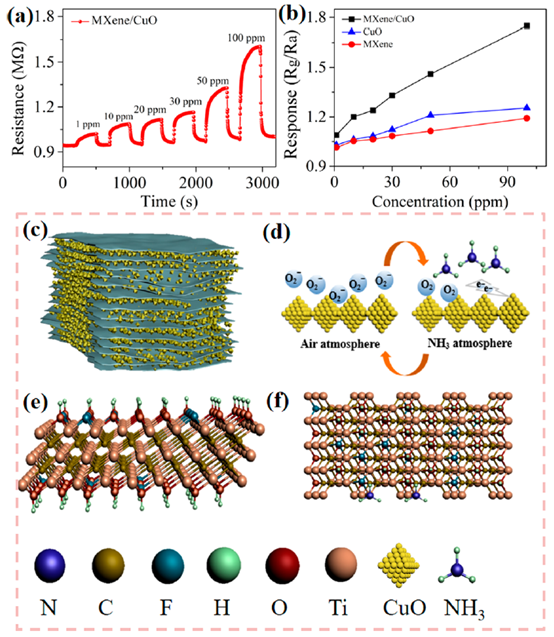
Figure 5. The dynamic response of related materials to ammonia and the sensing principle of the sensor.
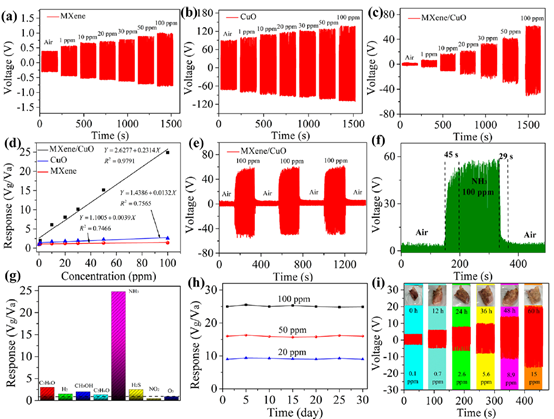
Figure 6. Sensitivity, response recovery time, gas selectivity, stability and practical application of the sensor.

In summary, a MXene/CuONH3 sensor driven by TENG based on PTFE and rubber is prepared in this paper. The open circuit voltage of TENG can reach 810V, and the short circuit current can reach 34 μA. TENG can support a maximum peak power density of 10.84 W·m-2 and can light up at least 480 LEDs. In addition, a flexible TENG device based on a single-electrode working mode was demonstrated as a wearable body motion detection device. The self-powered NH3 sensor driven by TENG has a good response at room temperature (24.8) and can be used to detect the deterioration of pork. The performance of Ti3C2Tx, MXene and CuO was analyzed through a series of characterization methods. Finally, through the discussion of the gas adsorption and desorption process, the enhanced sensing mechanism of MXene/CuO composite for NH3 was systematically analyzed.
Literature link:
https://doi.org/10.1021/acsnano.0c09015.

| Reminder: Beijing Beike New Material Technology Co., Ltd. supplies products only for scientific research, not for humans |
| All rights reserved © 2019 beijing beike new material Technology Co., Ltd 京ICP备16054715-2号 |